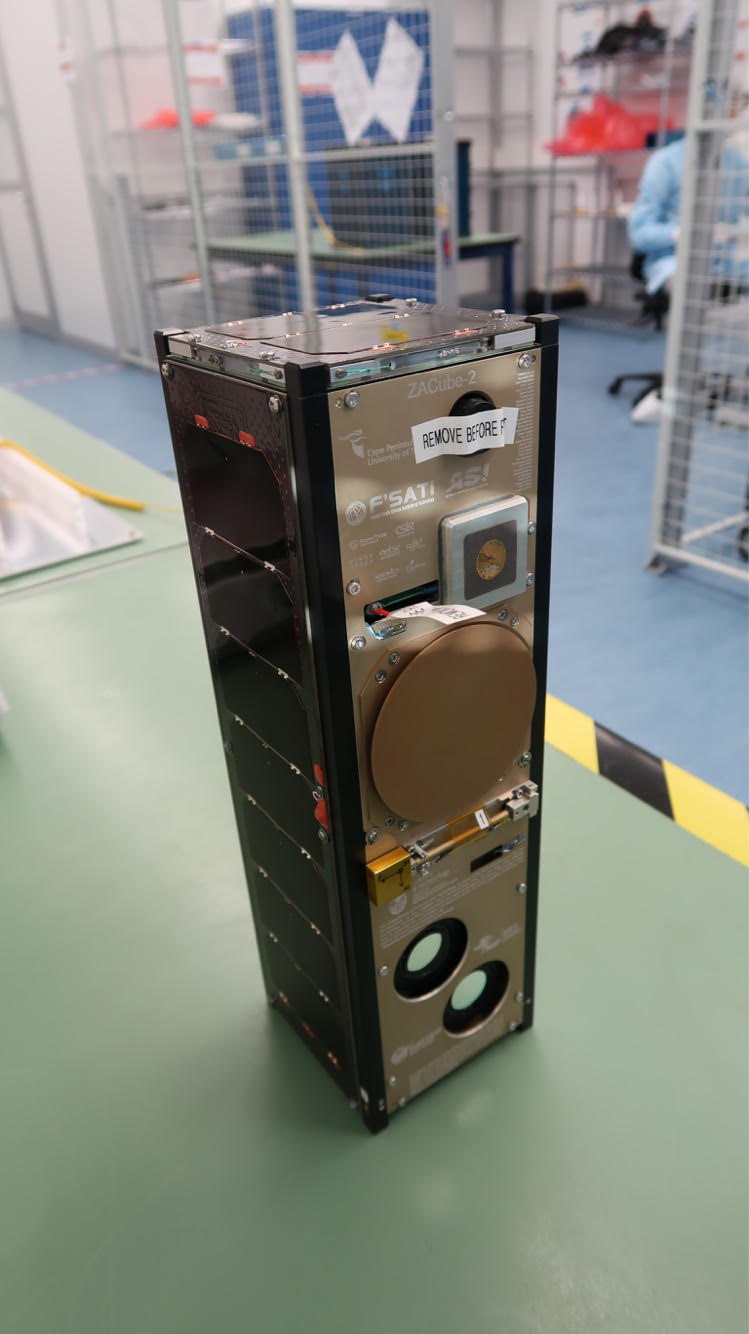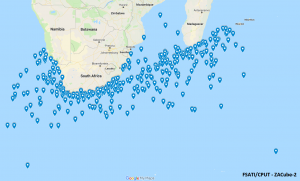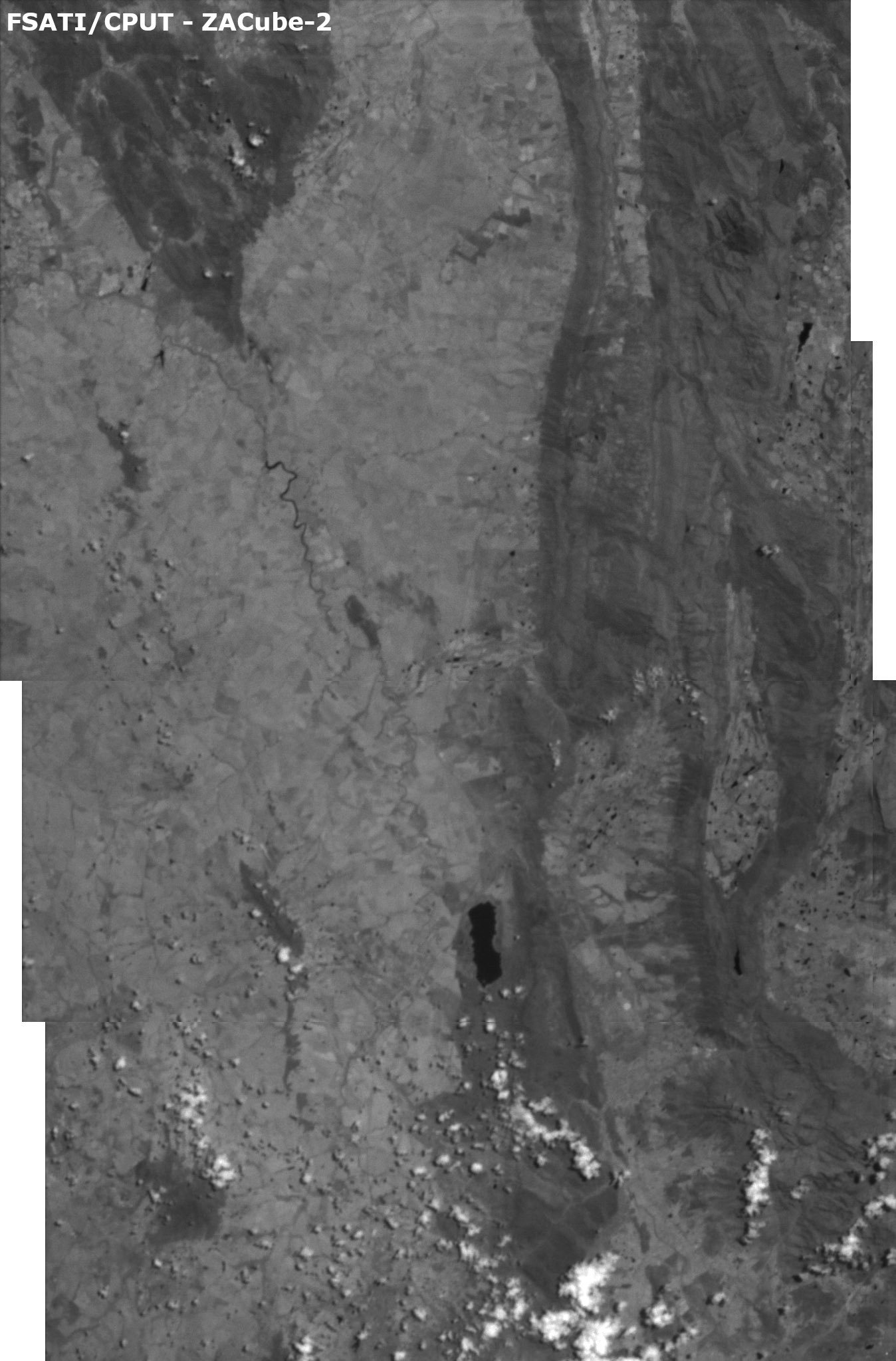
Mission Objectives
- Technology demonstration of AIS/VDE message reception using the primary payload
- Technology demonstration of a medium resolution imager payload
- Human capacity development (HCD)
- Flight heritage for F’SATI/CPUT hardware and also hardware from technology partner ESL
Current Status
updated 2019-07-29
-
- Launched on 27 December 2018 02:07:00 UTC from the Vostochny Cosmodrome.
Spacecraft
The satellite makes use of the CubeSat form factor and contains a mix of in-house developed and commercial-of-the-self components. Components are sourced from Clyde Space and Innovative Solutions In Space. ZACube-2 is South Africa’s most advanced CubeSat yet.
The UHF/VHF transceiver together with the S-band transmitter used on ZACube-2 was developed and built in-house at F’SATI/CPUT.
Payload
- VHF AIS/VDE receiver
- Medium resolution CMOS imager
Details
- Satellite name: ZACube-2
- Satellite Catalog ID: 43907
- International Designator: 2018-111AH
- Transceiver modulation and data rates: UHF AX.25 9600 bps GMSK
- Satellite transceiver manufacturer: CPUT/F’SATI
- Satellite antenna polarization: Linear
- Payload Transmitter modulation and data rates: S-band 2 Mbps QPSK
- Payload Transmitter manufacturer: CPUT/F’SATI
ZACube-2 in the media
Eye in the sky to monitor SA’s oceans – BDLive
Launch
ZACube-2 was successfully launched on 27 December 2018 at 02:07:00 UTC from the Soyuz-2.1a carrier rocket, carrying nanosatellites from SA, the US, Spain and Germany from Baikonur East in Serbia.
ZACube-2 preliminary payload data
Below is an image showing the positions of ocean vessels from which ZACube-2 received AIS messages during a short switch-on test on 1 January 2019.

Ocean vessel position from AIS messages received by ZACube-2
Below is the first image taken with ZACube-2’s K-line imager. It shows the area around and to the north of the Voëlvlei dam in the Western Cape.

First image from ZACube-2’s K-line imager
